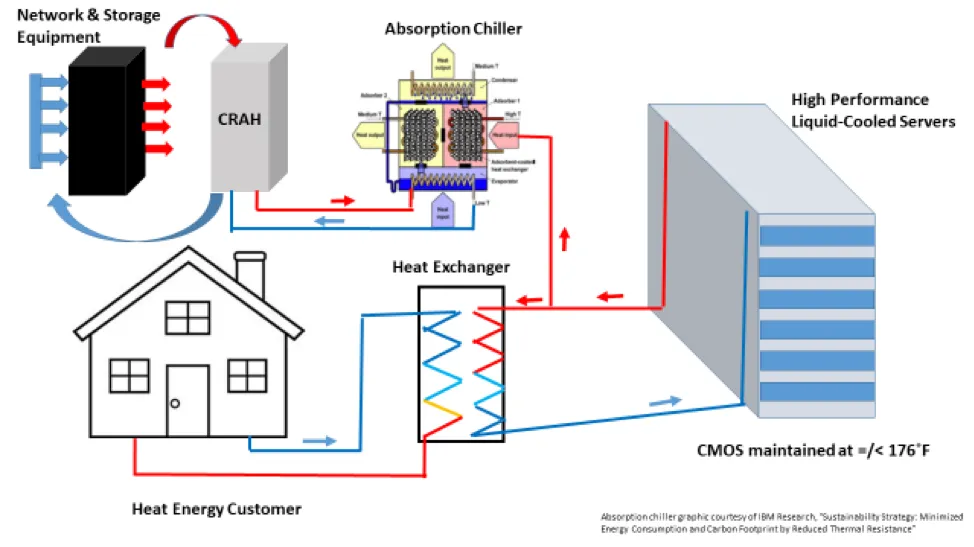In today’s digital age, data centers are the backbone of our increasingly interconnected world. These sprawling facilities house the servers and equipment that enable businesses to process, store, and manage vast amounts of data. However, with great power comes great responsibility, and data centers generate a substantial amount of heat. To keep these critical infrastructures running efficiently and sustainably, a new paradigm is emerging: Cooling as a Service (CaaS). In this article, we’ll explore the challenges data centers face in managing their thermal loads and delve into the innovative approach of Cooling as a Service.
The Data Center Conundrum
The Growing Demand for Data Processing
The digital landscape is expanding at an astonishing pace, with data consumption skyrocketing. Whether it’s streaming video, cloud computing, or the Internet of Things (IoT), the thirst for data processing continues unabated. As a result, data centers are constantly under pressure to increase their computing capacity, which, in turn, generates more heat.
The Heat Challenge
Heat is the enemy of data center efficiency. Servers and networking equipment generate significant amounts of heat, and if not properly managed, it can lead to performance degradation and even hardware failures. Traditional cooling solutions, such as air conditioning systems, have been the go-to choice. Still, they are often energy-intensive and struggle to keep up with the escalating thermal demands.
Cooling as a Service – A Paradigm Shift
What is Cooling as a Service (CaaS)?
Cooling as a Service is an innovative approach that revolutionizes the way data centers manage their thermal loads. Instead of data center operators investing heavily in cooling infrastructure, CaaS providers offer a subscription-based model. They design, implement, and manage cooling solutions tailored to the specific needs of the data center.
Customized Cooling Solutions
One of the key benefits of CaaS is the level of customization it offers. Providers assess the data center’s unique requirements, taking into account factors like server density, airflow patterns, and environmental conditions. This tailored approach ensures optimal cooling efficiency, minimizing energy waste and reducing operational costs.
Sustainability and Environmental Impact
With sustainability becoming a top priority for businesses worldwide, CaaS aligns perfectly with these goals. By optimizing cooling systems and leveraging innovative technologies, CaaS providers can significantly reduce energy consumption and carbon emissions. This not only benefits the environment but also helps data centers meet their corporate social responsibility commitments.
The Advantages of Cooling as a Service
Cost Savings
Data center operators can benefit from significant cost savings with CaaS. By outsourcing cooling management, they avoid the upfront capital expenditures associated with traditional cooling infrastructure. Additionally, CaaS providers are experts in optimizing cooling efficiency, further reducing operational expenses.
Scalability and Flexibility
In a rapidly evolving digital landscape, the ability to scale up or down quickly is invaluable. CaaS offers data centers the flexibility to adapt their cooling solutions as their needs change. Whether it’s expanding server capacity or adjusting to seasonal temperature variations, CaaS can accommodate these fluctuations seamlessly.
Enhanced Reliability
Reliability is paramount for a data center cooling system. Any downtime can result in substantial financial losses and damage to a company’s reputation. CaaS providers are dedicated to ensuring uninterrupted cooling operations, employing redundancy and proactive maintenance strategies to minimize the risk of cooling failures.
Overcoming Challenges and Adoption
Overcoming Skepticism
While the benefits of CaaS are undeniable, some data center operators may be hesitant to embrace this new model. Addressing skepticism requires clear communication of the advantages, showcasing successful case studies, and offering transparent pricing structures.
Increasing Adoption
As more data center operators recognize the advantages of CaaS, adoption rates are likely to rise. Industry associations and government initiatives can play a crucial role in promoting CaaS as a sustainable and cost-effective solution for data center cooling.
In the ever-expanding world of data processing, Cooling as a Service emerges as a game-changing solution to the heat challenges faced by data centers. By offering customized, sustainable, and cost-effective cooling solutions, CaaS providers are revolutionizing the way data centers manage their thermal loads. As the digital landscape continues to evolve, CaaS is poised to become an integral part of ensuring the efficiency, reliability, and sustainability of data center operations. Embracing this innovative approach may just be the key to beating the heat and staying ahead in the data center game.





